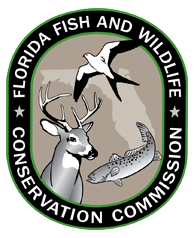Red Tide Mid-Week Update for November 10, 2021
Posted
Last Updated
Current Conditions
A patchy bloom of the red tide organism, Karenia brevis, persists along Florida’s Gulf Coast, where cells were detected in 92 samples over the past week. Bloom concentrations (>100,000 cells/liter) were observed in 13 samples: one from offshore of Walton County, five from Bay County, two from Franklin County, four from offshore of Lee County, and one from offshore of Collier County. Additional details are provided below.
- In Southwest Florida over the past week, K. brevis was observed at very low concentrations offshore of Charlotte County (in one sample), background to high concentrations in and offshore of Lee County (in 16 samples), and very low to medium concentrations offshore of Collier County (in four samples). Samples collected from or offshore of Pinellas, Hillsborough, Manatee, and Sarasota counties did not contain K. brevis.
- In Northwest Florida over the past week, K. brevis was observed at low concentrations in Santa Rosa County (in one sample), background to low concentrations in Okaloosa County (in seven samples), very low to medium concentrations offshore of Walton County (in three samples), background to medium concentrations in and offshore of Bay County (in 25 samples), very low to low concentrations in Gulf County (in three samples), very low to medium concentrations in Franklin County (in 15 samples), background to very low concentrations in and offshore of Wakulla County (in five samples), background concentrations in and offshore of Dixie County (in three samples), and very low to low concentrations in and offshore of Levy County (in eight samples). Samples collected from or offshore of Escambia, Citrus, Hernando, and Pasco counties did not contain K. brevis.
- Along the Florida East Coast over the past week, K. brevis was observed at very low concentrations in St. Johns County (in one sample). Samples collected from Flagler, Volusia, Brevard, St. Lucie, Martin, and Palm Beach counties did not contain K. brevis.
Fish kills suspected to be related to red tide were reported on the Florida Gulf Coast in Franklin and Sarasota counties over the past week. For more details, please visit: https://myfwc.com/research/
Respiratory irritation suspected to be related to red tide was reported over the past week in Southwest Florida in Sarasota County. For recent and current information at individual beaches, please visit https://visitbeaches.org/ and for forecasts that use FWC and partner data, please visit https://habforecast.gcoos.org/
Forecasts by the USF-FWC Collaboration for Prediction of Red Tides for Escambia County to Gulf County predict net western movement of surface and subsurface waters in most areas over the next 3.5 days. Variable to minimal net movement of surface and subsurface waters are predicted in most areas from Franklin County to northern Monroe County.
The next complete status report will be issued on Friday, November 12th. Please check our daily sampling map, which can be accessed via the online status report on our Red Tide Current Status page. For more information on algal blooms and water quality, please visit Protecting Florida Together.
This information, including maps and reports with additional details, is also available on the FWRI Red Tide website. The website also provides links to additional information related to the topic of Florida red tide including satellite imagery, experimental red tide forecasts, shellfish harvesting areas, the FWC Fish Kill Hotline, the Florida Poison Information Center (to report human health effects related to exposure to red tide), and other wildlife related hotlines.
To learn more about various organisms that have been known to cause algal blooms in Florida waters, see the FWRI Red Tide Flickr page. Archived status maps can also be found on Flickr.
The FWRI HAB group in conjunction with Mote Marine Laboratory now have a facebook page. Please like our page and learn interesting facts concerning red tide and other harmful algal blooms in Florida.

